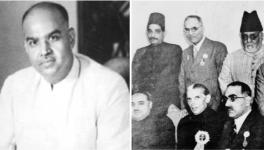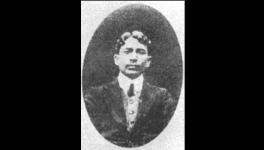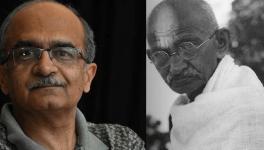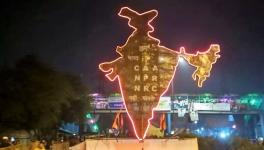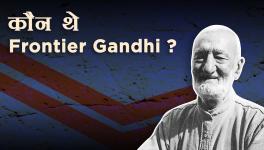My Experiments with Law: Gandhi’s Exploration of Law’s Potential
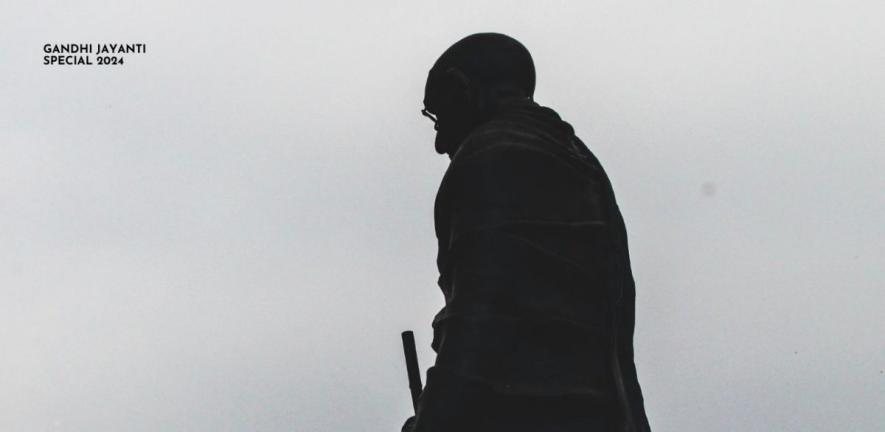
The 155th birth anniversary of M.K. Gandhi coincides with the growing salience of his thoughts in the world that we live in. Right from climate change activists to de-growth thinkers, peace activists and animal rights activists, Gandhi has become a patron saint.
I will engage with a question that I think has been insufficiently engaged with, namely what Gandhi means in the contemporary world for human rights lawyers and activists.
Though Gandhi was a lawyer, most people are likely to remember Gandhi’s blistering attack in Hind Swaraj on lawyers as those who “advance quarrels, instead of repressing them” and use their profession as means not to “help others out of their miseries, but to enrich themselves”.
However, the Gandhian archive reveals not a dismissal of the law, but rather a creative and passionate engagement with it. For Gandhi, there are at least two modes of engaging with law.
Firstly, he engages creatively with the forms of law to counter the narrative of the State by producing an alternative truth. Secondly, by disobeying an unjust law on the basis of his conscience, he articulates that the law can only command obedience if it is linked to justice.
The Champaran Agitation
Both ideas came to the fore in the first agitation Gandhi undertook on his return to India. The South Africa experience trained him in the arts of agitation, research, fact-finding as well as— most famously— civil disobedience.
He applied this learning in Champaran in 1917. In Champaran, the ryots were oppressed by the tinkathia system, where they were forced to cultivate indigo on a third of their land and were also subject to a range of other levies by the owners of the indigo factories.
The Gandhian archive reveals not a dismissal of the law, but rather a creative and passionate engagement with it. For Gandhi, there are at least two modes of engaging with law.
On reaching Champaran, Gandhi writes to the commissioner that “having heard a great deal about the condition of the Indians working in connection with an indigo plantation, I have arrived here to ascertain, so far as is possible, for myself the true position”.
Before he can proceed to “ascertain the true position”, the authorities serve him with an Order to “abstain from remaining in the district” and to “leave by the next train”.
Gandhi responds to this Order by stating, “I am unable to leave this district”, but “I shall submit to this Order by suffering the penalty of disobedience”.
The matter comes before the magistrate and he pleads guilty and asks for the highest penalty. In his statement, he says, “I have disregarded the Order served upon me, not for want of respect for lawful authority, but in obedience of the higher law of our being— the voice of conscience.”
The statement is delivered in open court, with “2,000 men” attempting to follow him into court and breaking the “glass panes of the door” of the court in their wild excitement to see Gandhi. The legal process and the movement process coincide in the Champaran agitation as seen in the above description.
The government, faced with this show of determined defiance, backs down and withdraws the Order of externment. Gandhi proceeds with his inquiry and in its course (along with his lieutenants which includes Rajendra Prasad) examines 4,000 ryots.
Regarding the method of the inquiry, a British officer noted, “Each witness is subjected to a severe cross-examining, as Gandhi is determined to get his facts on an incontrovertible basis… He also records depositions in writing. Every point raised is entered into in great detail.”
Gandhi in his preliminary report based on these testimonies concludes that the system of indigo cultivation under tinkathia and the “various illegal levies” has made the peasantry, most “abject” and “helpless”. He says that he had not witnessed such abjection in “any part of India” where he “had travelled”.
Tridip Suhrud contends that this preliminary report combined with the emerging perception of Gandhi as a leader forced the “government to consider the appointment of an official commission of inquiry”.
The government goes on to appoint an Agrarian Inquiry Committee with Gandhi as a member of the committee. The official committee recommends that the tinkathia system of forcing ryots to grow indigo should go and the recommendations of the committee become the law of the land through the passing of the Champaran Agrarian Act.
Gandhi’s engagement with the Champaran agitation is a brilliant illustration of a creative, subversive yet pragmatic engagement with the law. The initial impulse of saying, yes I have heard of what is going on as far as indigo cultivation is concerned but I need to verify the facts for myself, speaks to the Gandhian commitment to the question of documentation preceding any action.
However, the best-laid plans of even mahatmas can go awry as seen by the externment Order served upon him.
In response to the externment Order, he calls upon another notion of law, a higher law, more attuned to justice than the man-made laws of the British Raj. Thus, disobedience is clothed not in the language of subversion but rather in the language of true fidelity to a higher law, the law of conscience. Thus, for Gandhi, disobedience is not about the violation of law but rather marks the birth of a higher law.
In his statement, he says, “I have disregarded the Order served upon me, not for want of respect for lawful authority, but in obedience of the higher law of our being— the voice of conscience.”
The Gandhian act of disobedience has resonances with the famous act of disobedience of the king’s command by Antigone in Sophocles’ play. As Antigone declaims, in her existential confrontation with King Creon, whose law prohibits her from performing the last rites for her brother:
“Nor did I think your edict had such force
That you, a mere mortal, could override the gods,
The Great unwritten, unshakeable traditions.
They are alive, not just today or yesterday:
They live forever, from the first of time.”
For Antigone, the mere law of man cannot override the “great, unshakeable traditions”. Gandhi similarly articulates the existence of a deeper law to which the law of the State must yield.
From the realm of civil disobedience or what Gandhi christens satyagraha, Gandhi moves onto the register of law as it exists. Here, the exacting labour of transcription of testimonies, tested for veracity through cross-examination, results in a report which is substantive and difficult to controvert. The exhaustive documentation produced in the nature of a preliminary report in turn leads to the setting up of an inquiry committee by the government.
Gandhi, as a member of the committee, is able to persuade his fellow members to recommend that forcible indigo cultivation has ended.
Gandhi’s engagements with the law in Champaran were multifarious, traversing the range from law as dissent, to law as the production of an alternative truth, to finally becoming the law of the State.
In Champaran, we see the engagement with the law by Gandhi, which finds focus again, particularly in the post-Jallianwala Bagh Report authored by Gandhi as well as in the great sedition trial.
The Jallianwala Bagh massacre report
The report prepared by the Indian National Congress on the Punjab Disturbances in 1919 was a mode to challenge the State’s monopoly on truth. As a response to the Hunter Commission set up by the colonial government, which was seen as a partisan inquiry, the Indian National Congress came up with its own inquiry.
While Churchill contended that Jallianwala Bagh stood in “sinister and singular isolation”, the Gandhi-authored report sees the massacre as a logical end of British policy in Punjab based as it was on the dehumanisation of the Indian people.
In fact, as the Gandhi-authored report succinctly put it, Indian life was perceived by the British government to be “very cheap”. The mind of General Dyer, conditioned by this background of dehumanisation, was primed for perpetrating the massacre.
The action of General Dyer is thus depicted as emblematic of the enterprise of imperial rule. It is a manifestation of colonial rule which buttressed itself through periodic, overwhelming acts of terror.
The government, faced with this show of determined defiance, backs down and withdraws the Order of externment.
Gandhi drew upon his skills as a lawyer to construct an “alternative truth” to the State-authorised truth. He calls the massacre a “crime against humanity” twenty-five years before Nuremberg.
The report also contextualises the massacre within a history of increasing colonial provocations. One example that Gandhi puts forward is the introduction of the Rowlatt Bills which derogated from established principles of criminal law by removing all the safeguards to which the accused were entitled.
As Gandhi put it, “It is this Act, which raised a storm of opposition unknown before in India… In our opinion, no self-respecting person can tolerate what is an outrage upon society.”
This “crime against humanity” was followed by a period of martial law, during which Indians were again subject to a series of humiliations as punishment, including floggings, crawling Orders and other arbitrary punishments for the murder of Englishmen.
These humiliations, including the infamous crawling Order, received less media attention. However, the inquiry played a role in getting these “horrors” out into the public domain.
The Indian National Congress report also clearly pins responsibility for the actions of General Dyer at the very top of the administration. While General Dyer should be held accountable for his decision to pull the trigger, responsibility also vests in Sir Michael Dwyer, the Lieutenant Governor of Punjab, whose policies did so much to provoke the people of the Punjab and who approved the actions of General Dyer.
The committee also concluded that the Viceroy, Lord Chelmsford proved himself incapable of holding the high office to which he was called, and should be recalled.
The Gandhi-authored report continues to both inspire and challenge civil society when it comes to the question of undertaking an analytically rigorous, historically rooted investigation which can bear effective witness.
The great sedition trial
Gandhi was tried under Section 124-A of the Indian Penal Code on the charge of “exciting disaffection towards the government established by law in India” in Ahmedabad in 1921. Drawing from his South African experience and his experience in Champaran, Gandhi again pleaded guilty and made a statement.
The statement is an eloquent summary of why “a staunch loyalist and cooperator should become an uncompromising disaffectionist and non–cooperator”.
In the course of his statement, he challenged the legal system, arguing that it bears no inherent connection with justice, noting that the “administration of the law is thus prostituted consciously or unconsciously for the benefit of the exploiter”.
Famously, he concludes, “I hold it to be a virtue to be disaffected towards a government which in its totality had done more harm to India than any previous system.”
Tridip Suhrud contends that this preliminary report combined with the emerging perception of Gandhi as a leader forced the “government to consider the appointment of an official commission of inquiry”.
Within this understanding, law cannot be purely understood within the framework of precedent and repetition, but as something which is born outside this framework.
Thus, when Gandhi makes the celebrated gesture of disobeying the law, he is in his defiance, reaffirming the fact that law must have a connection to justice. He is implicitly asserting that if law is to be law at all, it cannot be linked to violence and force but must instead be linked to justice.
The disobedience of law is premised upon the fact that the law as it is, bears no relation to justice and for law to have a claim to a citizen’s obedience, it must satisfy the condition of being just.
Famously, he concludes, “I hold it to be a virtue to be disaffected towards a government which in its totality had done more harm to India than any previous system.”
Apart from making a profound point about the jurisprudential basis of law itself, the trial is also a great theatrical moment. By turning the trial of the rebel into the trial of the State, Gandhi’s trial is a precursor to how the trial becomes a space for the articulation of politics in the 20th century. The two great leaders who followed Gandhi in the use of the court as a space to reach out to a vast audience to great effect were Nelson Mandela and Fidel Castro.
All three of them stand as examples of what can be achieved through a radical exploration of the limits of the law.
Arvind Narrain is an author and legal scholar, and the author of 'India's Undeclared Emergency: Constitutionalism and the Politics of Resistance'.
Get the latest reports & analysis with people's perspective on Protests, movements & deep analytical videos, discussions of the current affairs in your Telegram app. Subscribe to NewsClick's Telegram channel & get Real-Time updates on stories, as they get published on our website.










